Features
Here you’ll get to read interviews with Hidden Shoal artists and other folk we call our friends, see us wax lyrical about our favourite tracks, wrap your ears around artist and label curated mixtapes and a host of other things we haven’t even dreamed up yet. If you’d like to keep up to date with Featured content and can’t rely on your memory then subscribe via our RSS Feed.
Enjoy!
Featured Track – Tangled Star ‘It’s Now or Later’
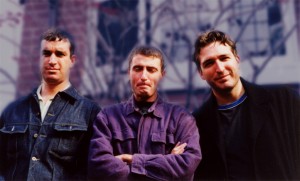 I’ll make no bones about it, Craig Hallsworth is a songwriting genius in my book. From his work with the Bamboos back in the 80’s to the Healers, Outstation, The Slow Beings and to his current Tangled Star project, Hallsworth has continued to craft brilliant rock and pop music. This week’s feature sees us dig back to the epic alt-country title track from Tangled Star’s 2007 mini-album It’s Now or Later. Whilst it may sound trite there is something innately Australian about this song as it weaves and winds it’s way across a more than seven minute terrain. Hallsworth manages to takes known rock tropes and gently twist them into his own shapes and the exultant shifts and wandering detours in the song bear witness to this. To top it all off Hallsworth’s wonderful turn of phrase infuses the music with curling narratives that take the song to another level again. Sublime.
I’ll make no bones about it, Craig Hallsworth is a songwriting genius in my book. From his work with the Bamboos back in the 80’s to the Healers, Outstation, The Slow Beings and to his current Tangled Star project, Hallsworth has continued to craft brilliant rock and pop music. This week’s feature sees us dig back to the epic alt-country title track from Tangled Star’s 2007 mini-album It’s Now or Later. Whilst it may sound trite there is something innately Australian about this song as it weaves and winds it’s way across a more than seven minute terrain. Hallsworth manages to takes known rock tropes and gently twist them into his own shapes and the exultant shifts and wandering detours in the song bear witness to this. To top it all off Hallsworth’s wonderful turn of phrase infuses the music with curling narratives that take the song to another level again. Sublime.
Sound and Scene with Chloe March
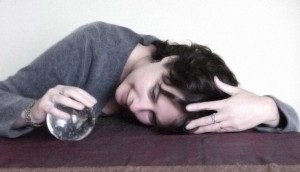 Chloë March’s ability as a composer and producer sees her create songworlds alive with feeling, shape and colour, and ringing with emotive energy. March’s music inhabits musical territory somewhere between art song and folk, dream-pop and electronica, the ambient and the cinematic and there is no better testament to this than on her recently re-released album Nights Bright Days. She has an innate ability to not only create music that is alive with atmosphere and narrative but to also deftly create room in each work for the listener to posit themselves and become part of the musical tapestry. It’s no wonder then she has been called upon to soundtrack a number of British theatrical works. As part of our ongoing Sound and Scene series Hidden Shoal’s Cam Merton sat down with Chloë to talk about her favourite film soundtracks.
Chloë March’s ability as a composer and producer sees her create songworlds alive with feeling, shape and colour, and ringing with emotive energy. March’s music inhabits musical territory somewhere between art song and folk, dream-pop and electronica, the ambient and the cinematic and there is no better testament to this than on her recently re-released album Nights Bright Days. She has an innate ability to not only create music that is alive with atmosphere and narrative but to also deftly create room in each work for the listener to posit themselves and become part of the musical tapestry. It’s no wonder then she has been called upon to soundtrack a number of British theatrical works. As part of our ongoing Sound and Scene series Hidden Shoal’s Cam Merton sat down with Chloë to talk about her favourite film soundtracks.
John Harle: A History of Britain by Simon Schama
Chloë: I was blown away by this score when I first saw the series in 2000. John Harle is a brilliant saxophonist and his score features his playing and also includes evocative arrangements of British folksongs performed by singers including Emma Kirkby. This music made a deep impression on me and just seemed to work so well with the material and Schama’s dramatic storytelling style. There’s a lot of symbolism used in the imagery, rather than full-on historical re-enactments and the music works in the same way, with older instruments like pipes, flutes, harp and the fragments of folksong, conjuring these lost worlds and tapping into a kind of communal musical memory. Harle is great at drama, at one point his screeching sax underscoring shots of fires during the passages about the burning of heretics – it’s very eerie! The sheer variety of tone he can get from the sax too is phenomenal and he really plays with that across the series. Another thing I love about this soundtrack is the space in it – the programmes often have silence, both in the presentation and in the score itself – so there’s space to take in the narrative, the facts, the imagery, the emotion of the past.
Cam: Your mention of space here is key to any discussion on film scoring. It is an art and almost an alchemical process to be able to support and grow the narrative and vision with sound and music.
Chloë: Yes – it must be so tempting to do too much and try to impose your own style, when what’s needed is something completely different or even nothing at all. I guess the composer needs to be incredibly sensitive about supporting that vision.
Harle used to work in the National Theatre Music Department early on in his career and I think I can hear that theatre music vibe. A lot of the music that I heard growing up was theatre music being practised by my parents, who were both musicians at the Royal Shakespeare Theatre in Stratford, so I was hearing composers like Howard Blake, Ilona Sekacz and Stephen Warbeck a lot! I got used to hearing music and wondering what scene it was for, what atmosphere it was creating and how it was doing it. Musicians had to adapt to the demands of the productions, like my dad playing fanfares on animal horns instead of trumpets, and my mum, a classical pianist, having to learn the accordion, get her head around the Yamaha DX7 synth and, most entertainingly for the rest of us, the theremin. When I eventually studied drama at uni I wrote a lot of music for productions and really enjoyed that challenge of having to create a particular atmosphere in a very short time. Sometimes I find it’s great to be given instrumental constraints and very short time-frames to compose in, especially if the dramatic/visual material you have is powerful.
Cam: That’s a really interesting point as I think that challenge has drawn a number of artists into crossing over into scoring for film. I can’t help but think of Clint Mansell in this regard, who went from the chaotic pop maximalism of Pop Will Eat Itself to producing the gorgeous, restrained score to Moon (amongst others, of course).
Chloë: Yes, it seems like limitations often bring out amazing and surprising creative results. I wonder if some artists are so drawn to film because as well as the challenge of it and wanting to develop as writers, there’s also this common discipline in some pop music of creating intense imagery and atmosphere. Not that other composers don’t do that, just that in pop you learn to do it within a very short time-frame, so to a pop artist being given a 90-minute film to score would seem like a luxuriously long amount of time to work with, but each cue has to create immediate atmosphere, so it also has that familiar discipline. But maybe also it’s easier in pop to put artists into boxes and not expect them to change what they do too much, so film-scoring would be incredibly liberating in that way too for someone who felt frustrated by that. It’s great also to discover that you can actually compose to a deadline if you’re used to spending years on an album like I am! That sense of urgency can sometimes generate wonderful creativity too.
Harle has also described himself as ‘a romantic, both as a player and a composer’ and I think that’s a big part of why I’m so drawn to his music. There’s a strong modal component to this score, with the plainchant, the folksongs and the sax playing what sometimes sound like virtuosic jazz improvisations – and I’m very drawn to that modality too, it’s how I write my own songs. He uses a lot of pure tones, both with his sax playing and with the early music vocalists who use hardly any vibrato, and I’m really interested in the juxtaposition of these tones put together with lush, jazz-influenced harmony. I also have a strong classical foundation and love jazz harmony and folk melody, so it’s probably inevitable that I love Harle’s music! I didn’t think to try working with saxophone myself until my latest album, when Ted Watson, a superb musician, offered to play for me – so I was finally able to experiment with writing for and singing with soprano sax, which was just fantastic and a lovely new direction for me.
Gabriel Yared: The English Patient
Chloë: I was a fan of Gabriel Yared before seeing this film as I’d fallen in love with the soundtrack he wrote for Betty Blue, which I listened to for years before actually seeing the film. I think maybe the chemistry of Yared’s creative partnership with Anthony Minghella is a vital part of the magic of this score. When I discovered that Yared had been part of the filmmaking process right from the start it really made sense – there’s just a feeling that the music and the film developed together in a really organic way and that it’s all intensely driven by the emotion that’s at the heart of the film. Minghella said afterwards, ‘There was a sense of us being unusually connected’. He was a musician himself and also said that he approached his filmmaking ‘as much from musical form as conventional storytelling’ – which is really interesting. It was Minghella who suggested that Yared use the Aria from the Bach Goldberg Variations and also the incredibly beautiful, haunting Hungarian folksong sung by Márta Sebestyén.
Cam: That kind of partnership between the creative drivers of vision and sound in films seems to be so natural and right it’s almost disappointing that it isn’t de rigueur in the film-making process. That’s not to say most directors wouldn’t have a pure vision (!) for the sonic and musical elements needed for the film, but having that collaborative partnership up front could sometimes bring so much more.
Chloë: I totally agree. It’s been so interesting doing this feature finding that most of the soundtracks I really love have emerged from these partnerships. Joe Wright and Dario Marianelli is another wonderful one. His score for Pride and Prejudice had to begin even before shooting started and ended up being a phenomenally successful soundtrack. I just don’t understand why music is sometimes added during the last few weeks of editing. Maybe it works for some films and for some composers who thrive on that challenge, but it seems like a wasted opportunity to me.
I love the way that Yared uses the Bach, orchestrating it, and writing the most beautiful pastiche that adds a deeply romantic lushness, without sentimentalising it or sounding naff. A lot of my early learning of the piano involved playing Bach, so I feel like that music is an old friend. I’m really interested in pastiche and the difference between writing say a baroque-sounding piece or a piece that reminds you of baroque but also takes you somewhere else. When I was commissioned to compose a score for a re-working of a ballet by Kurt Jooss from the 1930s, the choreographer asked for a contemporary score that would still hark back to that era. I really wanted to evoke an atmosphere that hinted at the 1930s rather than write full-on pastiche, so I tried to get a sense of composers like Weill and Walton into the music by using certain rhythms and instrumentation and then actually used a few chords from Stravinsky’s ‘Petrushka’ – I knew I could never compose like Stravinsky, but using his chords really pushed me to write music that I never thought I could and definitely took me right out of my comfort zone.
Cam: Have you found that this need to conceptualise when approaching score work is something that feeds back into your work as an artist, or is it something innate in the way you approach music as a whole?
Chloë: I’m not sure if it feeds back, or if that’s just how I am – it’s mostly ideas that make me feel creative, so yeah, it probably is the way I approach my music. Except for improvising, when I play the piano to express something immediately and for as long as I want! I’m much more aware of what I’m doing as a songwriter now, but sometimes I’ll write and finish a song in a few hours, and sometimes in months, so it’s a different process every time. I do usually like to have an idea to form the music around though. Usually it’s an idea that comes packed with powerful emotion or imagery and that resonates with what I’m feeling and wanting to express. What I love is to create these self-contained little worlds and atmospheres, so I’m drawn to vivid symbolism and imagery and stories.
It feels to me that Juliette Binoche is the heart of this film and it’s her character who has the Bach theme – I think it makes her character’s experience feel timeless, as well as redemptive because Bach has that spiritual link to church music, but it’s also timeless in its humanity and beauty too. There’s so much suffering and tragedy in the different narratives, but hers has this gorgeous lightness and hope to it. The scene in the church where her lover Kip transports her around the walls on a rope to look at the frescoes with a flaming torch is just so beautiful. At the moment when Kip lifts her off the ground Yared uses pizzicato strings and then brings in his beautiful Bach pastiche in the bowed strings with harp gliss as well, and it’s just perfect for the scene. There’s such joy in that music, but there is also melancholy there and this heartbreaking fragility and lightness, so you know her joy is probably temporary and that it’s come after so much devastating loss. All the strands of creativity going on – the music, Binoche’s utterly beautiful acting, the way we lift off with her and the timing of the scene within the whole film – it just really gets me every time!
Hans Zimmer: Interstellar (contains spoilers)
Chloë: I’m quite surprised to find myself talking about Hans Zimmer. I wouldn’t really have put him as one of my top favourite film composers before, but this soundtrack did really take me over during the film and I found it very powerful stuff. It’s a combination of electronic elements with orchestra/choir/organ and piano. He had no less than six orchestrators working with him on this score and it really does sound like a massive team effort. I felt like I was just taken captive by this film and manipulated and spun off into all sorts of different emotional states – and the music was a huge part of that. It’s fantastically epic but also has a lot of tension and meditative space in it too and underpins the emotional core of the father/daughter relationship with its long separation, sense of loss and also deep love and connectedness. This theme is beautiful I think, a combination of quite cold, slightly threatening soundscape with what becomes a melancholy piano/organ piece. Apparently Zimmer composed the score over a period of two years alongside the director Christopher Nolan shooting/scripting the movie, so it sounds like another case of a strong emotional, creative connectedness between director and composer.
Cam: Considering the scope of this film it seems fitting to have such an involved and long-range approach to the score. You can’t help but appreciate the kind of nuances that can be afforded with such a long-term involvement in the musical and sonic aspects of the film.
Chloë: Absolutely. I wonder if this kind of long-term involvement happens more in TV music where composers are on board for long series and really get to have that intense collaborative process – like Bear McCreary with Battlestar, or Jeff Beal with House of Cards. I really love both those soundtracks and also Frans Bak’s score for The Killing. Even though they’re having to write extremely quickly, these composers are developing music alongside the show with this long development arc – it must be great to do.
The moment in the cinema when I thought ‘this music is just brilliant’ was the scene where Matthew McConaughey’s character is driving his car through the fields on his way to fly the spaceship and the music just rachets up notch by notch until it actually sounds like rocket-launching music while he’s still driving the car – it’s such a clever moment and just got me totally emotionally involved with the film from that point on. I love repetitive patterns in music, used a lot in film scores, and this one is one of the best examples of that kind of rhythmic instrumentation in the style of Reich or Glass, being built on and lushed out, that I’ve heard in a while.
Anthony Gonzalez from M83/Joseph Trapanese: Oblivion
Another sci-fi, but I reckon this film is all about nostalgia and I think that’s probably why I really liked the soundtrack by M83 and Joseph Trapanese. There is beautifully futuristic imagery in this film, but the overall feel is one of almost unbearable melancholy and nostalgia I found. It’s partly the fact that it’s Tom Cruise in the lead, occasionally on a motorbike, giving this nostalgic tilt towards his movies of the ’80s, but it also made me think of Blade Runner. The soundtrack also triggers these references, as it’s so reminiscent of Tangerine Dream and Vangelis. There’s pastoralism too, as Cruise’s character goes back to his cabin by a lake on a pristine bit of Earth – it’s this gorgeous contrast with the post-apocalyptic bleakness of the destroyed land and the sharp shiny minimalist sky-pods they live in. Of course, when he goes back to his cabin it has his collection of vinyl records of Tangerine Dream and Blue Oyster Cult and he lies by the lake listening to Led Zeppelin and Procol Harum. It’s not just a yearning in the context of the film for a pre-war Earth-home, it feels like a heartfelt yearning of now for 20/30 years ago.
Cam: Perhaps the Tangerine Dream vinyl was a nod to the Risky Business soundtrack! The temporal mis-match of Cruise’s character’s nostalgic musical yearning is interesting – this would have been the music of his great great great grandparents, I assume. Yet the film-maker makes a choice to work with the audience’s collective musical notions of nostalgia. I guess it’s all part of the beautiful trickery that is cinema.
Chloë: Ah yes, I hadn’t thought of that! It definitely worked on me, anyway! Nostalgia and music is so intriguing – seems that sometimes it’s within the music itself and sometimes triggered by it and all the cultural memories around it. I often actually feel nostalgic for eras and places I never even knew or went to, just through music – which is very strange! It happens when I hear film soundtracks from the ’50s and ’60s, for instance, or even jazz from the ’40s. I don’t really know what’s going on there, maybe that’s a common thing – I’m not sure!
I’m really interested in the way that this synth-driven soundtrack is used as a kind of humanising element in the film – there is a lot of orchestration and piano motifs, but it’s when the synths have full rein that you feel really connected to Cruise’s character I think. Maybe it’s because we now have this long history of synth-centred music and it’s actually a warm familiar genre now and a communal memory for us, rather than the futuristic-seeming sound it was in the ’70s and ’80s. Now maybe it’s associated with a kind of technological innocence, which is a pretty strange thing. When I listened to Tangerine Dream as a teenager I just found it completely hypnotic, exciting and all-enveloping. The first time I actually played a synth was when I was 15 and my sister’s boyfriend left one in our house for a few weeks. I composed this soundtrack inspired by a sculpture that an artist in residence had made at school. It was a fantastic feeling to be able to access all the different pads and multi-track and get these really deep evocative sounds and I think that’s where my love-affair with making electronic music started.
Featured Track – Salli Lunn ‘The First Cause’
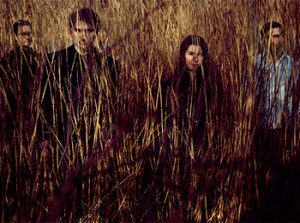 The stunning finale of debut album Heresy & Rite, ‘The First Cause’ is Danish noise-rock quartet Salli Lunn at their pulse-racing best. From the plaintive guitar arpeggios that open the track to the pummeling Swans-eque churn of the song’s climax, ‘The First Cause’ builds and builds into something truly awe-inspiring, with Jonas Munk’s production lending a sense of expansiveness and yearning to the ferocity of the band’s instrumental attack.
The stunning finale of debut album Heresy & Rite, ‘The First Cause’ is Danish noise-rock quartet Salli Lunn at their pulse-racing best. From the plaintive guitar arpeggios that open the track to the pummeling Swans-eque churn of the song’s climax, ‘The First Cause’ builds and builds into something truly awe-inspiring, with Jonas Munk’s production lending a sense of expansiveness and yearning to the ferocity of the band’s instrumental attack.
Three Questions With Christian Grothe
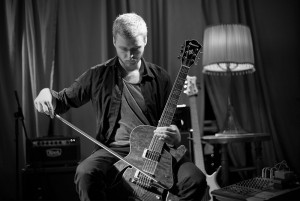 Under his Kryshe moniker, Germany’s Christian Grothe has produced some of the most beguiling and mesmerising experimental ambient music released in the last few years. His improvisational approach and incredibly delicate and atmospheric use of guitar, piano and digital manipulation is very much his own, married to an almost alchemical sense of composition. His most recent release, In Between, exemplifies this with its shimmering grandeur and wide, warm open spaces. One of the real highlights of Kryshe’s music is its undeniable emotional dimension – this is not music to help forget the world, but rather to soundtrack and mark your experiences within it.
Under his Kryshe moniker, Germany’s Christian Grothe has produced some of the most beguiling and mesmerising experimental ambient music released in the last few years. His improvisational approach and incredibly delicate and atmospheric use of guitar, piano and digital manipulation is very much his own, married to an almost alchemical sense of composition. His most recent release, In Between, exemplifies this with its shimmering grandeur and wide, warm open spaces. One of the real highlights of Kryshe’s music is its undeniable emotional dimension – this is not music to help forget the world, but rather to soundtrack and mark your experiences within it.
So without further ado, we ask Christian to reach into the bag and pull out three questions…
What kind of activity is your music made for?
When I listen to music, I like to get lost in the world of sound. I try to make music that I can get lost in, so maybe that’s the activity it was made for. But you can also use the music to create a nice atmosphere, just like you might light a candle.
What song of yours is most important to you and why?
The Growing EP is very important to me and I see it as one song because it came out of one live session. Although my sound is now a bit different, the creation of that EP was part of the process of developing my live set, and therefore a very important step in exploring the way in which I make music.
Why make music?
I make music because I’ve never done anything else! Because I’m a quiet person, when I make music I feel like I can express my stillness. Ideally, the music I make in the moment feels like an extension of myself. And maybe that’s why we’re here: to experience ourself. I think music is a very good way to do that.
“Down Low” Mixtape by Hidden Shoal
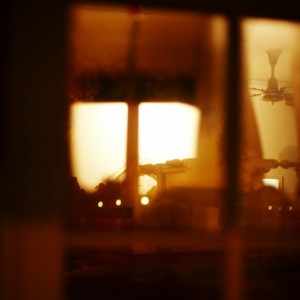 Following on from Markus Mehr’s brilliant Kitsch Before Glitch mix, the second installment in our new MixTape series comes from Hidden Shoal manager Cam Merton. Down Low beautifully showcases the breadth of down-tempo guitar-based music in Hidden Shoal’s catalogue, from the melancholic dream-pop of Kramies, to the droning instrumental atmospheres of Sleeping Me. A wide swathe of six-string songcraft is represented, resulting in an immersive mix that carries the listener across some breathtaking terrain.
Following on from Markus Mehr’s brilliant Kitsch Before Glitch mix, the second installment in our new MixTape series comes from Hidden Shoal manager Cam Merton. Down Low beautifully showcases the breadth of down-tempo guitar-based music in Hidden Shoal’s catalogue, from the melancholic dream-pop of Kramies, to the droning instrumental atmospheres of Sleeping Me. A wide swathe of six-string songcraft is represented, resulting in an immersive mix that carries the listener across some breathtaking terrain.
Down Low by Hidden Shoal on Mixcloud
Slow Motion Cinema – An Interview with Half Film
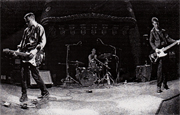 Half Film plays trance music. Not the mindless beat-driven sort you find in sweaty clubs, but the kind of sounds that put you into a deeply meditative state where you confront your deepest fears and converse with your truest self. What little writing I can find about them dubbed them slowcore, a sub-genre which, like most things branded with the unfortunate –core suffix, barely scratches the surface of defining an aesthetic. They’re slow in the way evolution is slow, their music unfolding at a snail’s piece, substituting traditional song structure and climaxes for a measured burn of emotion. Perhaps more than anything they’re cinematic, carefully crafting scenes with repeated motifs, scenes unfolding like blooming flowers as Eimer Devlin, Conor Devlin and Jason Lakis narrate what feels like the end of the world over brooding textures and measured, haunting guitar lines.
Half Film plays trance music. Not the mindless beat-driven sort you find in sweaty clubs, but the kind of sounds that put you into a deeply meditative state where you confront your deepest fears and converse with your truest self. What little writing I can find about them dubbed them slowcore, a sub-genre which, like most things branded with the unfortunate –core suffix, barely scratches the surface of defining an aesthetic. They’re slow in the way evolution is slow, their music unfolding at a snail’s piece, substituting traditional song structure and climaxes for a measured burn of emotion. Perhaps more than anything they’re cinematic, carefully crafting scenes with repeated motifs, scenes unfolding like blooming flowers as Eimer Devlin, Conor Devlin and Jason Lakis narrate what feels like the end of the world over brooding textures and measured, haunting guitar lines.
It’s been over a decade since Half Film split. The San Francisco trio released two LPs during their short run – 1998’s East of Monument and its 2000 follow-up, The Road to the Crater, both of which were re-released by Hidden Shoal in 2012.
The three have since scattered across the world – Jason hovered around California and now resides in Berkeley where he’s working on a new record for his sort-of-solo project Mist and Mast. In 2002, Conor and Eimer joined with members of Swell to form [the] caseworker (whose last two albums Letters from the Coast and Voices Out There were put out through Hidden Shoal) before going on an extended in hiatus in 2006. Conor moved to South Africa and now lives in Switzerland; Eimer left for Ireland but is back in Northern California. Along with the rest of [the] caseworker, they’ve spent the last few years demoing a third record by e-mail which will see the light of day in 2015 under the moniker AWMA. Here, the trio discuss the music they made at the turn of the century.
“We never felt [our records] got properly released for reasons I won’t go into,” Jason tells me over e-mail. I probe for a few days but it seems the frustrations are too deep to dig up. Eimer offers the same sentiment: “Just reading some of the references to old acquaintances gives me a stomach ulcer.” Conor opts not to name names, but chalks his discontent up to “a bottomless well of incompetence,” – label mismanagement, perennially intoxicated distributors and plain bad luck.
Half Film – ‘Coated’
Yet the resonance of the music over-powers any lingering angst over the machinations of a bloated industry. How could it not? Every track on East of Monument is catchy in the strangest possible way – almost anti-catchy. The songs embed themselves into that strange part of your brain that’s active when you’re halfway between sleep and wakefulness.
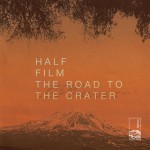 “I have very good memories of writing the songs, the rehearsals, hanging out,” Conor says. “But as others will tell you, I find having to listen to the records very traumatic. I feel they were never as good as what we (or maybe just I) heard in our heads, and there’s a gap between what you want to do and what you’re capable of. And when I hear the records, I’m hearing that gap and I assume everyone else hears it too. Having said that, when I had to hear the songs again recently to make sure the re-mastering went to plan, I could still hear very clearly what we were trying to express at the time, and I thought it was an honest expression of who and what we were at the time. We weren’t faking anything. ”
“I have very good memories of writing the songs, the rehearsals, hanging out,” Conor says. “But as others will tell you, I find having to listen to the records very traumatic. I feel they were never as good as what we (or maybe just I) heard in our heads, and there’s a gap between what you want to do and what you’re capable of. And when I hear the records, I’m hearing that gap and I assume everyone else hears it too. Having said that, when I had to hear the songs again recently to make sure the re-mastering went to plan, I could still hear very clearly what we were trying to express at the time, and I thought it was an honest expression of who and what we were at the time. We weren’t faking anything. ”
Eimer puts it another way: “I commute over the Golden Gate bridge a few times a week and since listening to the Half Film records again, as my bus approaches the bridge in the evening in my head I hear Con and Jay singing Hang and it gets me in the gut every time. I think that song means the most to me of any Half Film song.” Listening to Hang, it’s easy to get that same sense of despairing endless space; as the closing track on East of Monument, it carries the heart-breaking weight of an elegy to a something precious long since lost.
Half Film – ‘Machines, Hawks And The Perfect Equation’
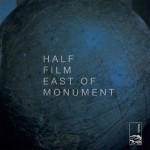 “Listening to the old Half Film discs – especially East of Monument – gives me a sense of nostalgia I don’t get from recordings of any of my other bands throughout the years,” says Jason. “I listen to ‘Coated’ and I get visions of the patterns on the walls of a club we played, the smell of a bar we hung out in.
“Listening to the old Half Film discs – especially East of Monument – gives me a sense of nostalgia I don’t get from recordings of any of my other bands throughout the years,” says Jason. “I listen to ‘Coated’ and I get visions of the patterns on the walls of a club we played, the smell of a bar we hung out in.
“Another thing about that time – there were a lot of little scenes, but we weren’t a part of any of them. I know that’s what everyone says, but it’s true. Other band’s members had played in each others bands for years. We were content along the sidelines, going to practice, then the bar (sometimes just the bar), then back to Conor and Eimer’s to listen to the day’s record store finds.”
Conor concurs. “We were definitely not a part of the scene; it felt natural to stay away. It still does,” he says. “San Francisco feels like a long way in the past now, but it’s great to look back and to have had such a unique experience while I was there. The memories are in the records.”
Check out East of Monument and The Road to the Crater at Half Film’s artist profile. The songs from both albums are also available for licensing through Hidden Shoal.
by Matthew Tomich.
Featured Track – Umpire ‘Spotlights’
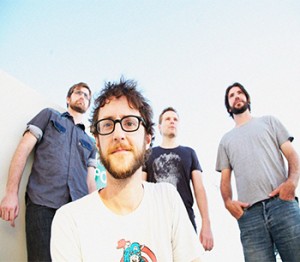 On Umpire’s ‘Spotlights’, it’s all about the slow-burn, the withholding – and the showstopping vocal from Geoff Symons. Minus the full band behind him, Symons and his downtuned SG create a heartbreaking little universe that speaks volumes. (Fun Umpire fact: At one stage, this was to be the opening track of their superb album Now We’re Active, but was switched to the penultimate spot for maximum impact.)
On Umpire’s ‘Spotlights’, it’s all about the slow-burn, the withholding – and the showstopping vocal from Geoff Symons. Minus the full band behind him, Symons and his downtuned SG create a heartbreaking little universe that speaks volumes. (Fun Umpire fact: At one stage, this was to be the opening track of their superb album Now We’re Active, but was switched to the penultimate spot for maximum impact.)
“Kitsch Before Glitch” Mixtape by Markus Mehr
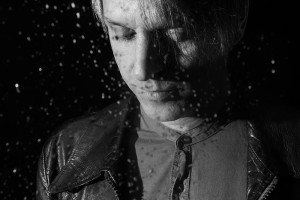 In this, the very first installment of our MixTape series we have the inimitable German experimentalist Markus Mehr serve us up a glowing slab of 60’s and 70’s pop entitled Kitsch Before Glitch. Even better, Markus has a second installment coming which will see the kitsch give way to glitch. Look out for that in 2015. For now though let’s hear what Markus has to say about this collection of songs before we soak them in.
In this, the very first installment of our MixTape series we have the inimitable German experimentalist Markus Mehr serve us up a glowing slab of 60’s and 70’s pop entitled Kitsch Before Glitch. Even better, Markus has a second installment coming which will see the kitsch give way to glitch. Look out for that in 2015. For now though let’s hear what Markus has to say about this collection of songs before we soak them in.
“A few years back, together with a friend i ran a small and cosy club (Der Pavian) in my hometown. Once or twice a month we had nights called Las Vegas Ballroom or Farfisa Club were I was putting on records just like these. These nights were packed and it was so much fun to play this timeless music. The guys who wrote, recorded and sang these songs were gods to me. The sonic quality is so unique, they did incredible arrangements for fantastic songs. This music from the sixties and seventies might be a bit over the top here and there but it will always have a special place in my heart, so i hope you enjoy this mixtape just as much as i do. P.S. and yes, the vinyl-noises are authentic…” – Markus Mehr
“Kitsch Before Glitch” by Markus Mehr by Hidden Shoal on Mixcloud
The World On Tape – An Interview with Markus Mehr
Hidden Shoal’s Matthew Tomich spoke with Markus Mehr about his new album Binary Rooms, phonography and the art of sound.
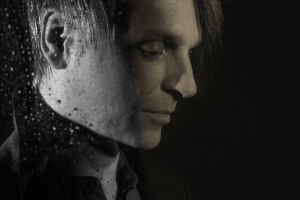 Under his solo moniker, Markus Mehr has made a career out of patterns. Before the release of his fifth record Binary Rooms last month, his last three albums – a triptych of interconnected ambient/drone records, beginning with IN in January 2012, ON 6 months later and concluding with OFF in January 2013 – were exercises in sonic ritual, building upon repetitions of harsh electronic noise, warm synths and ethereal sound manipulation. But on Binary Rooms, Mehr’s new preoccupation is with duality and the relationship between opposites: warm and cool, organic and synthetic, reality and fiction. Part of that latter juxtaposition comes because much of the material on Binary Rooms began as field recordings.
Under his solo moniker, Markus Mehr has made a career out of patterns. Before the release of his fifth record Binary Rooms last month, his last three albums – a triptych of interconnected ambient/drone records, beginning with IN in January 2012, ON 6 months later and concluding with OFF in January 2013 – were exercises in sonic ritual, building upon repetitions of harsh electronic noise, warm synths and ethereal sound manipulation. But on Binary Rooms, Mehr’s new preoccupation is with duality and the relationship between opposites: warm and cool, organic and synthetic, reality and fiction. Part of that latter juxtaposition comes because much of the material on Binary Rooms began as field recordings.
“I didn’t sit down and play a piano or play the guitar and see what’s coming out of me,” Mehr tells me over Skype from his home studio in Augsburg, Germany. “So it’s more a collecting kind of thing. Then you start out and play around with things. It’s more that a sound or a recording or a noise attracts me, and I want to find out what is it and what can I do with it. Can I extend it? Can I slice it? Can I trash it or can I refine it? Like everybody who does field recordings I always put my ear on things to find a spectacular sound. It could be a car that drives by my window. It could be my cat. He’s snoring and that’s a beautiful sound. And after that hunting, a lot of editing and processing follows up.”
“I’m basically a musician, but on Binary Rooms, most of the time I did non-musical things. I see myself nowadays as more of a phonographer. I look at what’s outside and what’s surrounding me. That’s maybe where the whole thing starts. ‘Gymnasium Swarms’ starts with a sound from my kitchen. So you can hear my heater here. It’s a very spooky sound.”
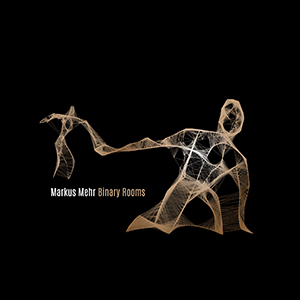 The result of Mehr’s new found interest in field recordings and found sounds is a record that’s diverse and brimming with aural contradictions. The eight tracks on Binary Rooms offer so much variation that it’s impossible to settle upon a mood for more than a single composition. Opener ‘Buoy’ is 2 minutes of claustrophobic and uneasy listening, littered with sparse and unsettling sounds that sound as though they could be metal scraping against metal, the plucking of an out-of-tune violin or something else entirely. It’s followed by ‘In The Palm Of Your Hand’ which marries pulsating synthetic percussion with a somber piano riff and street ambience, before the harsh glitches of ‘Pedestrians’ strike like an electric shock. What Mehr appears to be doing on Binary Rooms is inhabiting a creative space that situates him somewhere between composer, phonographer and assembler of the aural world around him.
The result of Mehr’s new found interest in field recordings and found sounds is a record that’s diverse and brimming with aural contradictions. The eight tracks on Binary Rooms offer so much variation that it’s impossible to settle upon a mood for more than a single composition. Opener ‘Buoy’ is 2 minutes of claustrophobic and uneasy listening, littered with sparse and unsettling sounds that sound as though they could be metal scraping against metal, the plucking of an out-of-tune violin or something else entirely. It’s followed by ‘In The Palm Of Your Hand’ which marries pulsating synthetic percussion with a somber piano riff and street ambience, before the harsh glitches of ‘Pedestrians’ strike like an electric shock. What Mehr appears to be doing on Binary Rooms is inhabiting a creative space that situates him somewhere between composer, phonographer and assembler of the aural world around him.
“[On Binary Rooms] I’m doing collages and putting things together to try to arrange new levels and new worlds,” he explains. “I try to redesign realities. I try to redesign reality in itself – maybe from A to B, you make C. To try to bring things together that usually don’t belong together – that’s exciting.
“For example, ‘Basin of the Lost’ is based on underwater recordings where all these really sad fishes swam in a tank, ready to become a burger or wha ever just a few hours later. And during the editing of the track, I don’t know why, but I thought a helicopter sound would be great. So in the real world these two audio events don’t belong together, but in the track – I mean, it makes sense somehow, and it keeps the whole thing weird and narrative. That’s the kind of work that interests me most right now.”
At 86 seconds, the track ‘Blackbox’ feels like an interlude, but buried beneath its oscillating synths is a fascinating subtext. Mehr initially began working on the then-unnamed song in 2013, and found himself applying some finishing touches on July 17, when less than a day’s drive from Augsburg, Malaysia Airlines Flight 17 was downed in Ukraine, killing all passengers on board. Though the title was eventually changed to ‘Blackbox’, Mehr initially named the track ‘MH17’ as a means to force himself to remember the tragedy.
“I had no title for that track,” he says, “and I thought, we have so much news – so many things around our head every day – and if we are honest, that tragedy is almost out of our minds right now. And it was very personal, because I’ve tried to make a mark in my mind that it happened while I was working on that track. There are so many tragedies we have to see on the screen and after two or three days they’re gone. I wanted to make sure that this one doesn’t go out of my mind anymore.”
Featured Track – Elisa Luu ‘Slow Bass Flute’
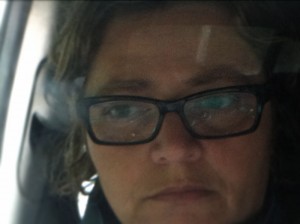 Elisa Luu‘s achingly beautiful electronica is a humbling reminder that music made using computers can be just as emotive, if not more so, than music made using more ‘conventional’ instruments. On ‘Slow Bass Flute’ from her majestic debut Chromatic Sigh, the attention to detail in the synth tone is heart-stopping in itself. But listen to the way it gently unfurls into a gloriously evocative and melancholic melody – it’s the kind of song you just don’t want to end.
Elisa Luu‘s achingly beautiful electronica is a humbling reminder that music made using computers can be just as emotive, if not more so, than music made using more ‘conventional’ instruments. On ‘Slow Bass Flute’ from her majestic debut Chromatic Sigh, the attention to detail in the synth tone is heart-stopping in itself. But listen to the way it gently unfurls into a gloriously evocative and melancholic melody – it’s the kind of song you just don’t want to end.